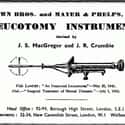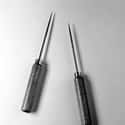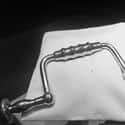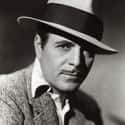-
(#5) In The 1940s, Over 40,000 Americans Underwent The Procedure - Including A Four-Year-Old Child
Over the course of the 1940s, a whopping 40,000 people were lobotomized throughout the United States. In 1949 alone, 5,000 underwent the procedure. The people who received it weren't all adults either - one was a four-year-old child. Another was also a 12-year-old boy named Howard Dully who suffered from a "reluctance to go to bed on time" and had the bad habit of daydreaming.
Dully received his lobotomy in 1960, proof that it took some time for the procedure to fade out as a treatment option.
-
(#8) Psychologist Walter Freeman Once Performed 20 Lobotomies In One Day
Once Freeman had simplified his ice pick lobotomy procedure, he could perform many of them in one day. In his view, he was "helping" as many patients as possible. His record was 20 lobotomies in one day. Freeman was reportedly a bit of a showman and he enjoyed having an audience, even when the procedure went wrong and killed his patients.
Over the course of his career, Freeman performed 2,900 lobotomies, with his last one taking place in 1967 and ending with the death of the patient after Freeman accidentally severed a blood vessel in the person's brain.
-
(#10) The Lobotomy Turned Some Patients Into "Living Zombies"
In some cases, when it was done carefully, the lobotomy helped patients. However, most of the time, it had drastic consequences that resulted in patients becoming zombie-like versions of themselves. There are many stories of former lobotomy patients not being able to walk, talk, or even perform simple tasks after the procedure. Others were left feeling apathetic, forgetful, unreactive, or even careless.
While it did take away the violent tendencies of the mentally ill, it did so at a great cost.
-
(#4) The Procedure Was Used To Treat Schizophrenia, Compulsive Disorders, And Depression
Prior to the beginning of the WWII, there were over 400,000 people in mental institutions. During the early 20th century, most people with a mental illness were put into institutions. The lobotomy was designed to help the patients, specifically those with schizophrenia, depression, and compulsive disorders.
Once they were treated, they would either be able to function in regular society, be cared for by family, or be less of a hassle for the nurses and orderlies in the asylums.
-
(#12) It Is Still Practiced In Some Countries To Curb Violent Behavior
Most of North America and Europe view the lobotomy as an archaic and barbaric procedure. However, some countries still practice it in the 21st century. These lobotomies are reserved for the most violent patients in India, Japan, Sweden, and Australia.
-
(#13) Actor Warner Baxter Received A Lobotomy To Help With His Arthritis Pain
Warner Baxter was a silent film star who was in movies like 42nd Street and The Cisco Kid. His career slowed down when films were no longer silent, but not because he didn't have the voice for it. Instead, he suffered from chronic pain and arthritis, which hampered his ability to function well while on set. The pain was so bad that he stopped eating properly.
The doctors decided to give him a lobotomy during his second hospitalization in the hope of lessening his pain. Whether or not the procedure worked is still uncertain, as Baxter developed pneumonia shortly afterwards and died in 1951 at the age of 62.
New Random Displays Display All By Ranking
About This Tool
Lobotomy is neurosurgery that removes the connecting tissue of the prefrontal cortex of the brain. It was mainly used to treat some mental illnesses from 1930 to 1950. It was also the world's first psychiatric surgery. The recognized inventor of lobectomy won the Nobel Prize in Physiology and Medicine. However, less than a year later, Antonio Moniz was criticized, and the lobectomy began to be resisted worldwide.
Due to the low precision of the operation performed on the brain under crude conditions, and surgical patients had symptoms similar to dementia and mental retardation after the operation. The random tool explains 14 things about the crude surgical procedure of early lobotomy.
Our data comes from Ranker, If you want to participate in the ranking of items displayed on this page, please click here.
















